10 May 2024
![]() 10 mins Read
10 mins Read
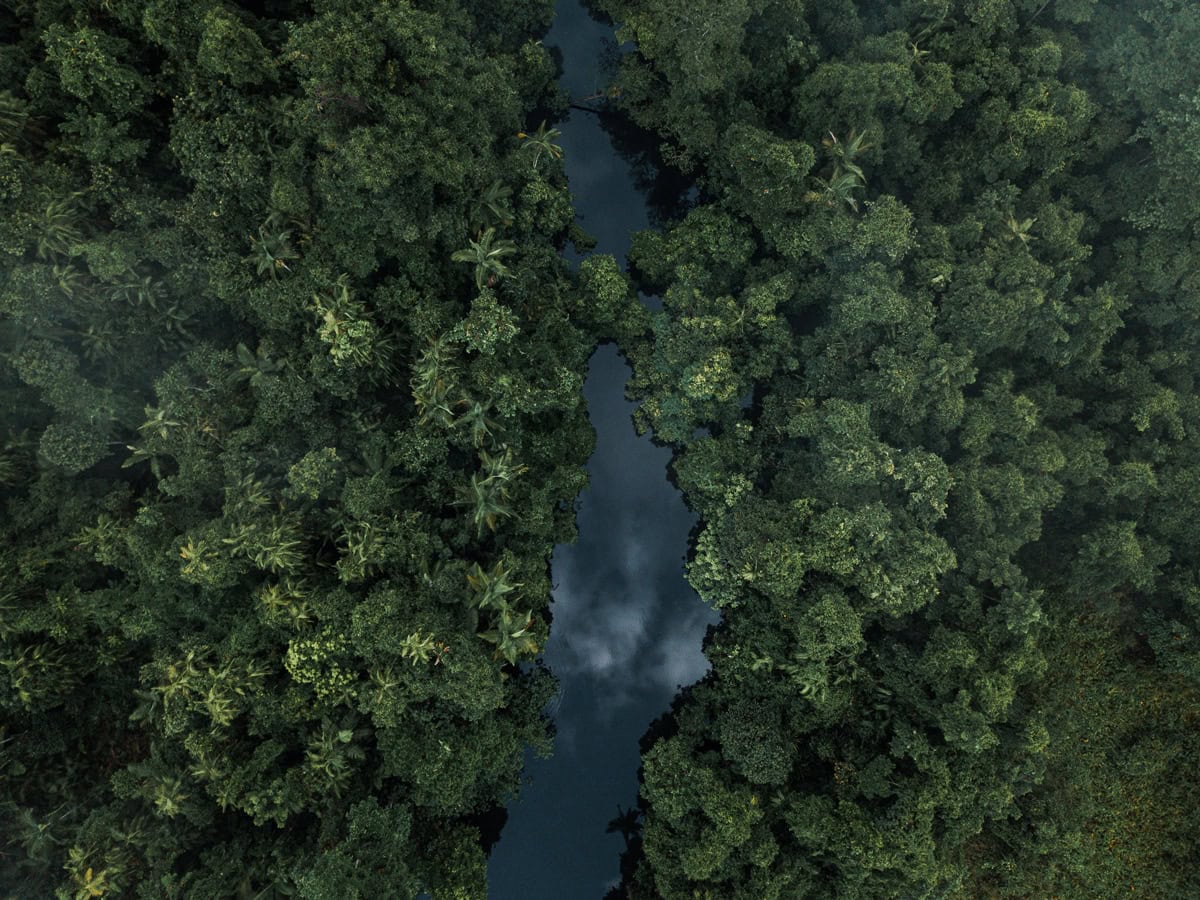
This article is part of our 100 Australian Wonders series. Throughout the series, we explore our nation’s wonders across culture, nature, food, islands and many more. We hope it inspires your own exploration of Australia’s many wonders.
Travelling with: Carla Grossetti
The mouth of Undara lava tubes yawns open as visitors clamber down a path that punches into the heart of the attraction in Undara Volcanic National Park, a couple hundred Ks inland from Cairns. The Undara lava tubes formed after Undara Volcano erupted some 200 million years ago, creating rivers of lava where it flowed. Access to Undara is by guided tour only.

Undara Volcanic National Park preserves the remains of one of the world’s longest flows of lava. (Image: Tourism and Events Queensland/ Sean Scott)
In addition to the Undara Outback Rock and Blues weekend, held in April each year, expect nightly performances from the thousands of insectivorous bats that flock in and out of the lava tubes at dawn and dusk each day.

Peek through the Undara lava tubes. (Image: Tourism and Events Queensland/ Jason Charles Hill)
Travelling with: Megan Arkinstall
A heritage-listed aircraft hangar in the iconic outback town of Longreach, some 1200 kilometres north-west of Brisbane, symbolises the birth of Australian civil aviation. Qantas was founded in neighbouring Winton in 1920 but its headquarters were moved to Longreach two years later, and it is here that flights connected the Australian outback to the world for the very first time.
Doubling as a cultural institution (part of the Cultural Attractions of Australia collective), this museum is a must for patriots, as well as history and aviation buffs. It displays a fully interactive Boeing 747-238, historic aircraft, uniforms and other artefacts that celebrate the heritage of the founders and early operations of our national airline.

Aviation buffs will relish a visit to the Qantas Founders Museum. (Image: Cultural Attractions of Australia)
Travelling with: Katie Carlin
Cast off at sunrise to witness the ‘river of mirrors’ at its most spectacular. That’s when you’re likely to see osprey take flight as you glide through a blanket of waterlilies past ancient tea tree forests on the banks of the Noosa Everglades – one of only two everglades systems on Earth.

Be surrounded by lush hinterland at Noosa Everglades. (Image: Tourism and Events Queensland)
The pristine network of waterways is home to 40 per cent of Australia’s bird species and overlaps the Noosa and Great Sandy UNESCO Biosphere reserves, making it one of the world’s most pristine environments.
Explore it onboard a river cruise with Everglades Eco Safaris or kayak with Kanu Kapers, both award-winning ecotourism operators on the Sunshine Coast.

Cruise along the Noosa Everglades. (Image: Tourism and Events Queensland)
Travelling with: Megan Arksintall
From above, it looks like someone has run amok with white-out and highlighters, so vivid are the colours of Whitehaven Beach. This seven-kilometre stretch of sand on Whitsunday Island is made up of 98 per cent pure-white silica and lapped by pristine, aqua-hued water.

Go for a swim at Hill Inlet. (Image: Tourism and Events Queensland/ Courtney Atkinson)
At the northern end, Hill Inlet is a marbled beauty of sand and sea, an ever-changing landscape at the mercy of the shifting tides. These swirling whites and blues are best seen from the lookout at Tongue Point. Protected by Whitsunday Islands National Park, Whitehaven has appeared on many ‘best beaches’ lists and is the ultimate day trip from either Airlie Beach or Hamilton Island.

Hill Inlet is a marbled beauty of sand and sea. (Image: Tourism and Events Queensland/ Katie Purling)
Travelling with: Carla Grossetti
A Google Earth view of Brisbane reveals the Brisbane River (Turrbal: Maiwar) snaking its way through the city. Zoom out on the city and its serpentine river and you will see where it empties into Moreton Bay on the Coral Sea.

Tangalooma wrecks are anchored on Moreton Island. (Image: Tourism and Events Queensland/ Kyle Hunter and Hayley Andersen)
Pull back even further and you’ll find a string of islands dotted off the Queensland coast that are just a short boat ride from Brissy. Island hop from Mulgumpin (Moreton Island) to Minjerribah (North Stradbroke Island), Bribie, Peel and Coochiemudlo islands before mooching around Russell, Macleay, Karragarra and Lamb, which make up the islands of Southern Moreton Bay. Another valid reason to put Brisvegas on the radar.
Travelling with: Emily Murphy
K’gari dazzles at every turn whether it’s witnessed from land, sea or sky. Home to the Butchulla people, the name is derived from a Dreaming story about a princess named K’gari who fell in love with the place and never wanted to leave.
And much like Princess K’gari, visitors to the world’s largest sand island will be bewitched by its luminous lakes, fascinating sand sculptures, bountiful marine life and epic drives along the sandy 75 Mile Beach. The list goes on…

Escape to the west coast of K’gari. (Image: Tourism and Events Queensland/ Kyle Hunter)
Travelling with: Megan Arkinstall
Lizard Island claims a remote, exclusive location no other luxury resort can – nestled in the centre of intricate inner and outer reef systems of the Great Barrier Reef. Some 240 kilometres north of Cairns, the island is a stark desert-like landscape covered in rocky outcrops, hugged by translucent water that transposes into a tie-dye of blues.

The House at Lizard Island is nestled at the heart of the Great Barrier Reef. (Image: Elise Hassey)
Beneath the shimmering surface: coral reef, giant clam gardens, a habitat of green sea turtles and the world-famous Cod Hole dive site.

Wake up to oceanfront views. (Image: Elise Hassey)
The island comprises an all-inclusive resort of just 40 suites and The House at Lizard Island, both of which exude understated luxury with unrivalled nature-based experiences, and warrant a solid spot on your dream destination list.

The House at Lizard Island delivers unbeatable luxury in a tropical setting. (Image: Elise Hassey)
Travelling with: Carla Grossetti
Potato cods are members of Australia’s ‘Great Eight’ shortlist, which includes iconic species of the southern Great Barrier Reef. Named after the large, round potato-shaped markings on their body, these giant spuds of the sea are actually members of the grouper family.
And the best place to see them is at the world-renowned Cod Hole Dive Site, some 96 kilometres north of Cairns. The Cod Hole is part of a string of long, narrow ribbon reefs that necklace the waters of the Coral Sea and is most accessible from Lizard Island in Tropical North Queensland.
Challenge yourself to enter the water at night, where the inky darkness ups the underwater thrills. Or join a five-night adventure with Mike Ball Dive Expeditions.

Dive beneath the surface to explore the world-renowned Cod Hole Dive Site. (Image: Tourism and Events Queensland/ Tom Park)
Travelling with: Steve Madgwick
The Great Beach Drive is the Promised Sand for 4WDers, from novices to know-it-alls. The 380-kilometre (off)road trip starts north of Noosa on Queensland’s Sunshine Coast.

Count the hues of hyper-coloured sand cliffs near Rainbow Beach. (Image: Tourism and Events Queensland)
Deflate your tyres and hum along 60km/h sections of Teewah Beach’s hard sand. Count the hues of hyper-coloured sand cliffs near Rainbow Beach. Stay a day or two to drink in Rainbow’s small-town lack-of-attitude and check out Carlo Sandblow. Summon all your 4WDing aptitude to negotiate Inskip Point’s narrow finger of land while boarding the K’gari-bound ferry.
Then explore this extraordinary island for as long as your annual leave allows, before ferrying over to Hervey Bay (two hours tarmac drive back to Noosa). Check tides, ferry times and permits at the Great Sandy Information Centre in Tewantin.

Walk barefoot on the 15-hectare Carlo Sandblow. (Image: Tourism and Events Queensland)
Travelling with: Katie Carlin
Bounce along red-dirt tracks to meet creek crossings guarded by waiting crocodiles. Spot termite mounds the size of trees. Swim under thundering waterfalls. Tuck into a meal at a roadhouse. Embrace a station stay. And experience the merging of two First Nations cultures on Country en route to the northernmost point of the Australian continent – Pajinka.
The route is more than 1400 kilometres from Cairns to Cape York via Cooktown, but the journey is unlike anything else in Australia.

Drive the red dirt tracks of the Cape York Peninsula. (Image: Tourism and Events Queensland)
Travelling with: Steve Magdwick
A few chilled days in utopian Mission Beach, two hours south of Cairns, is its own reward but also perhaps your best chance to see a weird, wonderful cassowary in the wild. Don’t go chasing the tropical dino bird, just observe it* (Mother Nature willing) from a safe distance as you explore the surrounding rainforest and beaches. Cruise down to South Mission Beach by bike. Stride through the flourishing forest of the Dreaming Trail circuit. Eat breakfast at hippy-chic Bingil Bay Cafe. Mission Beach overflows with tributes, from the aptly named Cassowary Drive to kitsch effigies and murals galore. (*A sticky beak around Garners Beach and behind Tasman Holiday Parks may be fruitful.)
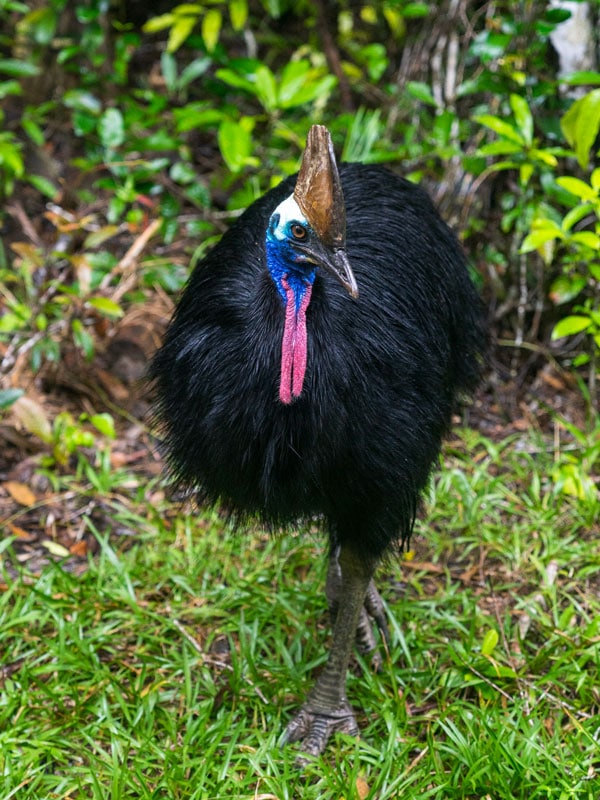
See a cassowary in the wild. (Image: Tourism and Events Queensland/ Narelle Bouveng)
Travelling with: Carla Grossetti
Standing in the beautiful green dappled light of the Daintree in Tropical North Queensland is akin to being in a cathedral. The world’s oldest living rainforest was recognised by UNESCO in 1988 as having one of the most important ecosystems in the world containing relics of the Gondwanan era, which existed more than 180 million years ago.

Explore the world’s oldest living rainforest. (Image: Tourism Australia)
Take a guided tour deep into the Daintree with one of the Traditional Owners from the Mossman Gorge Cultural Centre. Here you will hear birds that only know how to screech, not sing. Inhale air that is thick with the cloying perfume of the forest floor. And understand why the Daintree is so deserving of our devotion.
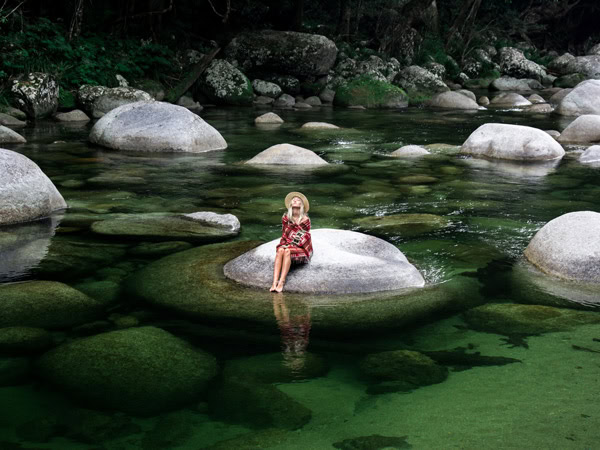
The magic of Mossman Gorge needs to be experienced. (Image: Silky Oaks Lodge)
Travelling with: Lara Picone
Slip below the surface of Queensland’s Great Barrier Reef and it’s as if a black light has been switched on, illuminating fish and corals brilliantly highlighted with neon paint. The iridescence seems manufactured for human amusement, but the UNESCO World Heritage-listed wonder is not here to entertain us (although, as the world’s largest single structure made by living organisms, it absolutely does).
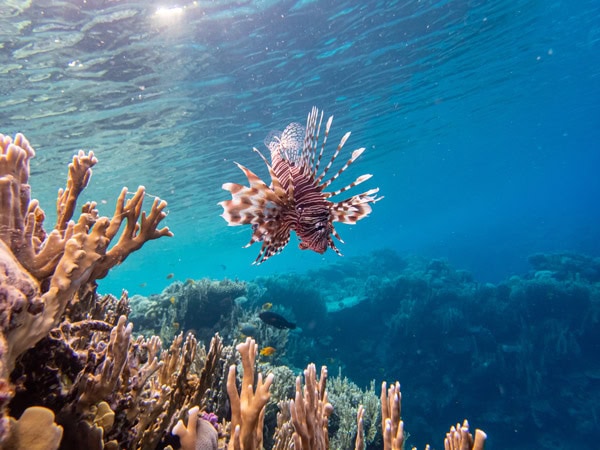
The Great Barrier Reef is home to a variety of fascinating marine life. (Image: Hlib Serbskyi via Getty Images)
A natural marvel on a scale so immense it can be seen from space, yet so vulnerable that the carelessness of our species might destroy it, the reef deserves our heartfelt respect and protection. Because it has always been there, we tend to overlook its majesty, but a single plunge reaffirms its significance and magnanimous beauty.
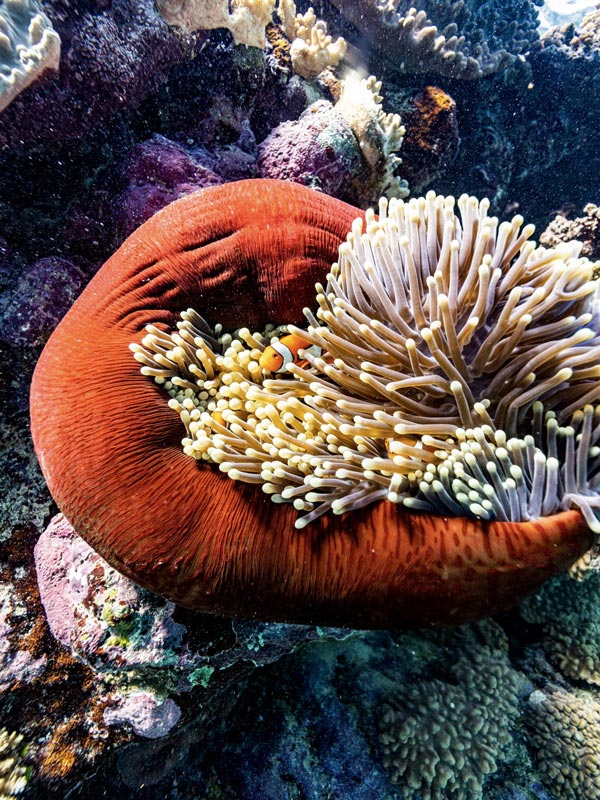
Dive beneath the surface to see the wonder of the reef.
LEAVE YOUR COMMENT